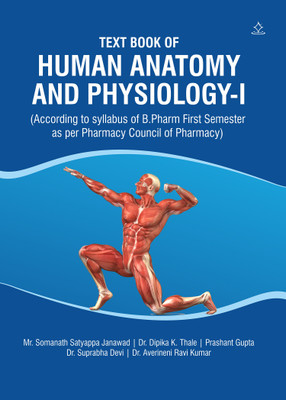TEXT BOOK OF HUMAN ANATOMY AND PHYSIOLOGY-I - According to syllabus of B.Pharm First Semester as per Pharmacy Council of Pharmacy(Paperback, Mr. Somanath Satyappa, Dr. Dipika K. Thale, Prashant Gupta, Dr. Suprabha Devi, Dr. Averineni Ravi)
Quick Overview
Product Price Comparison
The Text Book of Human Anatomy and Physiology-I is a foundational resource tailored for students beginning their journey into the biological sciences and healthcare fields. It offers a comprehensive introduction to the structure and function of the human body, starting with basic concepts such as the definitions and scopes of anatomy and physiology. The book delves into the levels of structural organization, beginning with cellsŌĆöthe building blocks of lifeŌĆöand progresses through tissues, organs, and systems. Each chapter is methodically organized to build upon the previous one, ensuring a logical progression of knowledge. The cellular level of organization explains cell structures, functions, transport mechanisms, division, and intracellular signaling pathways. In the tissue section, the book details the classifications and functional significance of epithelial, muscular, nervous, and connective tissues. The integumentary system chapter highlights the structure and vital protective functions of the skin. The skeletal and muscular systems are examined in detail, with emphasis on bone classification, joint articulation, and muscle physiology including neuromuscular junctions. The book also includes essential insights into the body fluids and blood, outlining components, hematopoiesis, coagulation, and disorders. The lymphatic system section presents the roles of lymph, lymph nodes, and organs in immunity. Further, the peripheral nervous system is thoroughly explored, covering cranial and spinal nerves, and the sympathetic and parasympathetic divisions. Special senses are introduced with detailed coverage of the eye, ear, nose, and tongue, along with associated disorders. The cardiovascular system chapter offers a deep dive into heart anatomy, blood flow, vessel structure, and physiological processes like cardiac output and blood pressure regulation. Each system is described in a student-friendly manner, supported by clear terminology and clinical relevance. This book is not just a study guide but a stepping stone toward deeper understanding in the fields of medicine, pharmacy, and allied health sciences.

